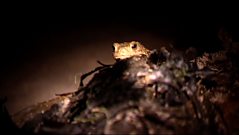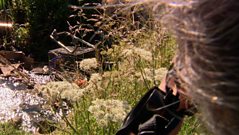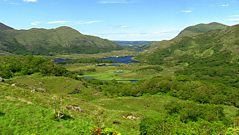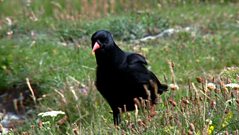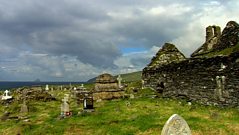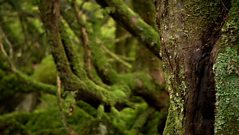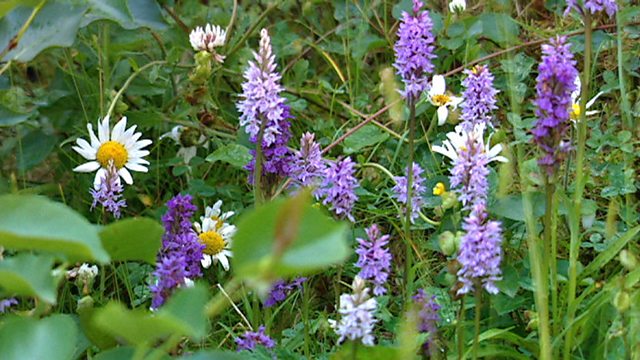
Form and function
Wild flower names hold wonderful stories of folk history.
Bill Oddie came to Hawksley Nature Reserve once before and was told all about wild flowers by the warden. Now he's back to show us. First is the viper's bugloss. The bugloss bit of the name refers to the leaves, which are tongue-shaped and very prickly - 'bugloss' is Greek for 'ox tongue'. The viper part may come from the spotty stem or the seed head that looks a bit like a snake's head. Back in the old days plants were used to treat whatever the plant looked like, so viper's bugloss was used for snake bites. The bird's foot trefoil is a very common legume. Its three leaves gives it its name, 'trois feuille' in French. The bird's foot is found when the flowers fall off - a structure that looks like a bird's foot. It is also called bacon and eggs in some places. The rest harrow has a story associated with its name. Back when farmers had horse-drawn harrows and ploughs, this little plant would get all tangled up in the wheels, rakes and ploughshares, and cause them to grind to a halt - the harrow would come to a rest. If a plant has leaves like a nettle but has a proper flower on the top it will not sting you. This one is hedge woundwort and, as the name implies, it was used many years ago to heal wounds. There are lots of woundworts - Bill wonders if they had to keep trying because none of them worked? Identifying wildflowers is a matter of getting your eye in, seeing the connections and looking them up in a book later. They stick in your mind better if you do a drawing or take a photograph.
Duration:
This clip is from
Featured in...
![]()
Βι¶ΉΤΌΕΔ Nature
Be captivated, informed and inspired by the world's wildlife.
More clips from Northumberland
-
![]()
Barmy, balmy night
Duration: 02:45
-
![]()
Ratty in the city
Duration: 05:28
-
![]()
Gentle gulls
Duration: 01:15
-
![]()
Bird monument
Duration: 03:57
More clips from Bill Oddie Goes Wild
-
![]()
Mossy woodland—Series 3, South West Ireland
Duration: 01:59
-
![]()
Chough country—Series 3, South West Ireland
Duration: 03:52
-
![]()
Deserted village—Series 3, South West Ireland
Duration: 01:36
-
![]()
Yew forest—Series 3, South West Ireland
Duration: 01:48


